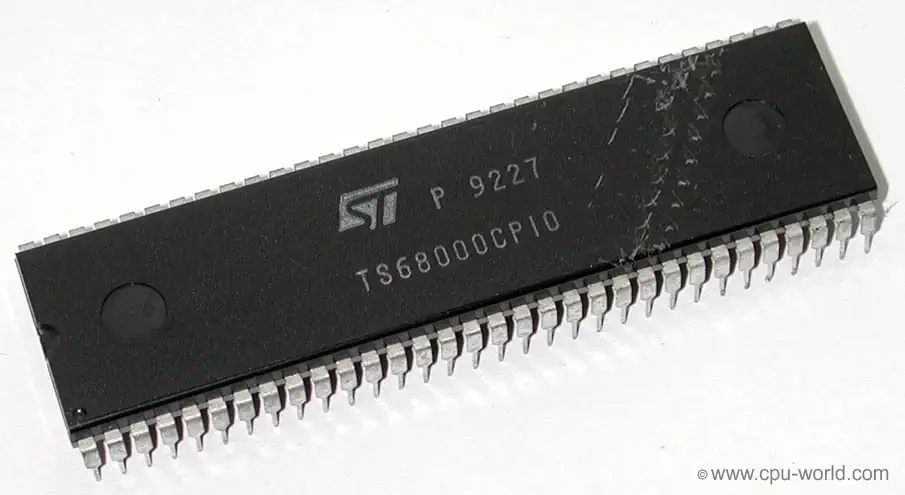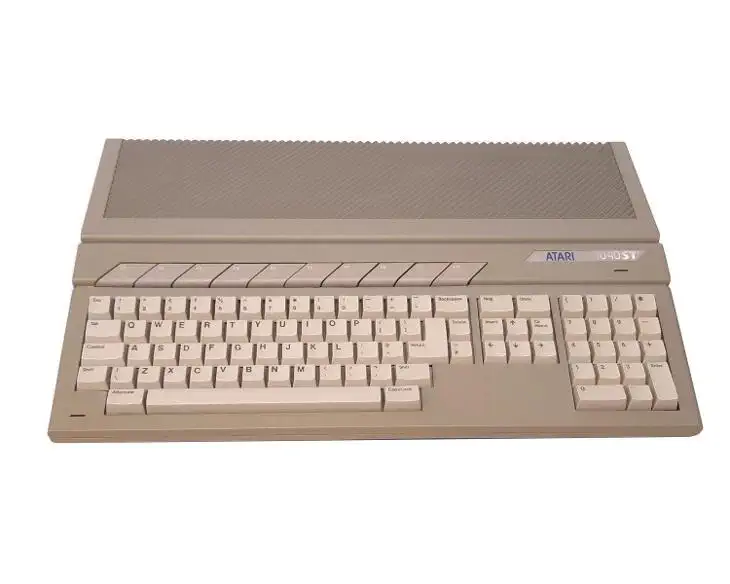Introduction
In late 1989, Atari released the 520STE and 1040STE, enhanced version of the STs with improvements to the multimedia hardware and operating system. It features an increased color palette of 4,096 colors from the original 512, Genlock support, and a blitter co-processor (stylized as "BLiTTER") which can quickly move large blocks of data (most particularly, graphics data) around in RAM.
The STEs were the first Atari with PCM audio; using a new chip, it added the ability to play back 8-bit (signed) samples at 6258 Hz, 12517 Hz, 25033 Hz and even 50066 Hz, via DMA (Direct Memory Access).
Atari ST - Brief History
At the Winter Las Vegas Consumer Electronics Show of 1985, the Atari 130ST was introduced. ST stands for Sixteen bit data-bus and Thirty-two address-bus. Atari, after it was bought by Jack Tramiel, originally had contracted the Amiga Corporation to manufacture a 16-bit computer, but the contract was dissolved due to legal issues. Atari then rushed to get a machine out to compete with the release of the Comodore Amiga.
The Atari ST line came with many new features over previous Atari computers:
- 16 bit processor, 68000 CPU
- Midi Interface
- Graphical User Interface OS
- High graphics resulution in color
The new ST systems came with several dedicated coprocessors that enabled enhanced sound, graphics and memory management:
- MFP 68901 - Interrupt handler
- Yamaha YM 2149 - Programable Sound Generator (AY-3-8910 compatible)
- Shifter - Custom video processor
- GLUE - Custom Memory Manager (MMU)
The Atari130 was a demonstration only prototype, and never released. Due to it's small memory size, the OS did not function properly and the machine was quickly replaced with the Atari 260ST. This computer came with 512KByte of memory, but due to the large need of the OS (192KByte) and the memory need of the enhanced graphics, only 64KByte of free RAM was left.
The new operating system was called TOS, the Tramiel Operating System. The OS was basically a port of CP/M for the 68000 processor. Also interesting is that the high level TOS calls, called GemDOS, were all compatible with the DOS calls for the PC (DOS INT21h calls).
The GUI was called GEM, which stands for Graphical Environment Mamnager. The OS was provided on disk for the early ST models, which limited the free RAM left, and later it was baked into 6 32KByte ROM chips when the OS was fully finished.
Programmable Sound Generator (AY-3-8910 compatible PSG)
The AY-3-8910 is a 3-voice Programmable Sound Generator, or PSG. It was designed by General Instrumet in 1978 for use with their own 8-bit PIC1650 and their 16-bit CP1610 computers.
The PSG is widely used in many arcade cabinets, pinball machines, and many micro-computers. Here is a list of some of the major brands of computer that used the AY-3-8910:
- Intellivision
- Vectrex
- Amstrad CPC range
- Oric-1
- Color Genie
- Elektor TV Games Computer
- All MSX-1 and MSX-2 computers
- ZX Spectrum home computers
General Instrument spun of MicroChip Technology in 1987 and the chip was sold under the MicroChip brand, and licensed to Yamaha as the YM2149F which the Atari ST range of computers use. Functionally the PSG is very similar to the Texas Instruments SN76489.
Variants:
-
AY-3-8910
Comes with 2 general purpose 8-bit parallel I/O ports, used for Keyboard and Joystick in for instance MSX. -
AY-3-8912
Same chip, but in a 28-pin package. Parallel port B is not connected to save cost and space. -
AY-3-8913
Same chip, but in a 24-pin package. Both parallel ports are not connected. -
AY-3-8914
The AY-3-8914 has the same pinout and is in the same 40-pin package as the AY-3-8910, except the control registers on the chip are shuffled around, and the 'expected input' on the A9 pin may be different. It was used in Mattel's Intellivision console and Aquarius computer. -
AY-3-8930
Backwards compatible but BC2 pin is ignored
YM2149F -
YM3439-D
CMOS version of the Y2149 in 40-pin DIP -
YM3439-F
CMOS version of the Y2149 in 44-pin QFP -
YMZ294
Variant of the YM3249 in an 18-pin package. Parallel ports not connected, and all sound channels mixed on 1 port. -
T7766A
Toshiba variant of the AY-3-8910, fully compatible. Used in some MSX models. - Winbond WF19054, JFC95101, and File KC89C72: Fully compatible versions of the AY-3-8910 produced for slot machines.
Yamaha Produced chip, same pin-out as the AY-3-8910, but pin 26 could halve the master clock. Can be used to replace the AY-3-8910 if pin 26 is left disconnected.
Motorola 68000 CPU Family
The Motorola 68000 is a 16/32-bit microprocessor that was first released in 1979. It was widely used in computers and other electronic devices during the 1980s and early 1990s. The 68000 was known for its advanced architecture, which included a 32-bit internal bus and a 24-bit address bus, allowing it to access up to 16 megabytes of memory. This made it more powerful than many other processors of its time, such as the Intel 8086 and Zilog Z80. It was also designed to be highly modular and expandable, with a large number of on-chip and off-chip peripherals.
Some of the most famous and successful computers that used the 68000 was the Commodore Amiga and the Atari ST, both of which were popular in the home and personal computer markets. Additionally, it was also used in workstations, such as the Sun 3 and Apollo DN3000, and in a wide variety of embedded systems and industrial control systems. The 68000 was also used in the Macintosh, the first model of the Macintosh was powered by a Motorola 68000 CPU. The processor was eventually succeeded by the 68020 and 68030, which offered improved performance and additional features.
The 68000 has a 32-bit instruction set, with 32-bit registers and a 16-bit internal data bus. The address bus is 24-bit and does not use memory segmentation, making it easier to address memory. There are three ALU's (Arithmetic Logic Unit), two for calculating addresses, and one for data, and the chip has a 16-bit external address bus.
The 68000 architecture was expanded with 32-bit ALUs, and caches. Here is a list with some 680x0 versions and their major improvements:
- 68010 - Virtual memory support
- 68020 - 32-bit ALU & Instruction Cache
- 68030 - On-Chip MMU, 2x 256 byte cache
- 68040 - 2x 4K Cache, 6 stage pipeline, FPU
- 68LC040 - No Floating Point Unit (FPU)
- 68060 - 2x 8K Cache, 10 stage pipelinet

Source: WikiPedia - Motorola 6800
Source: WikiPedia - 68000 Series


